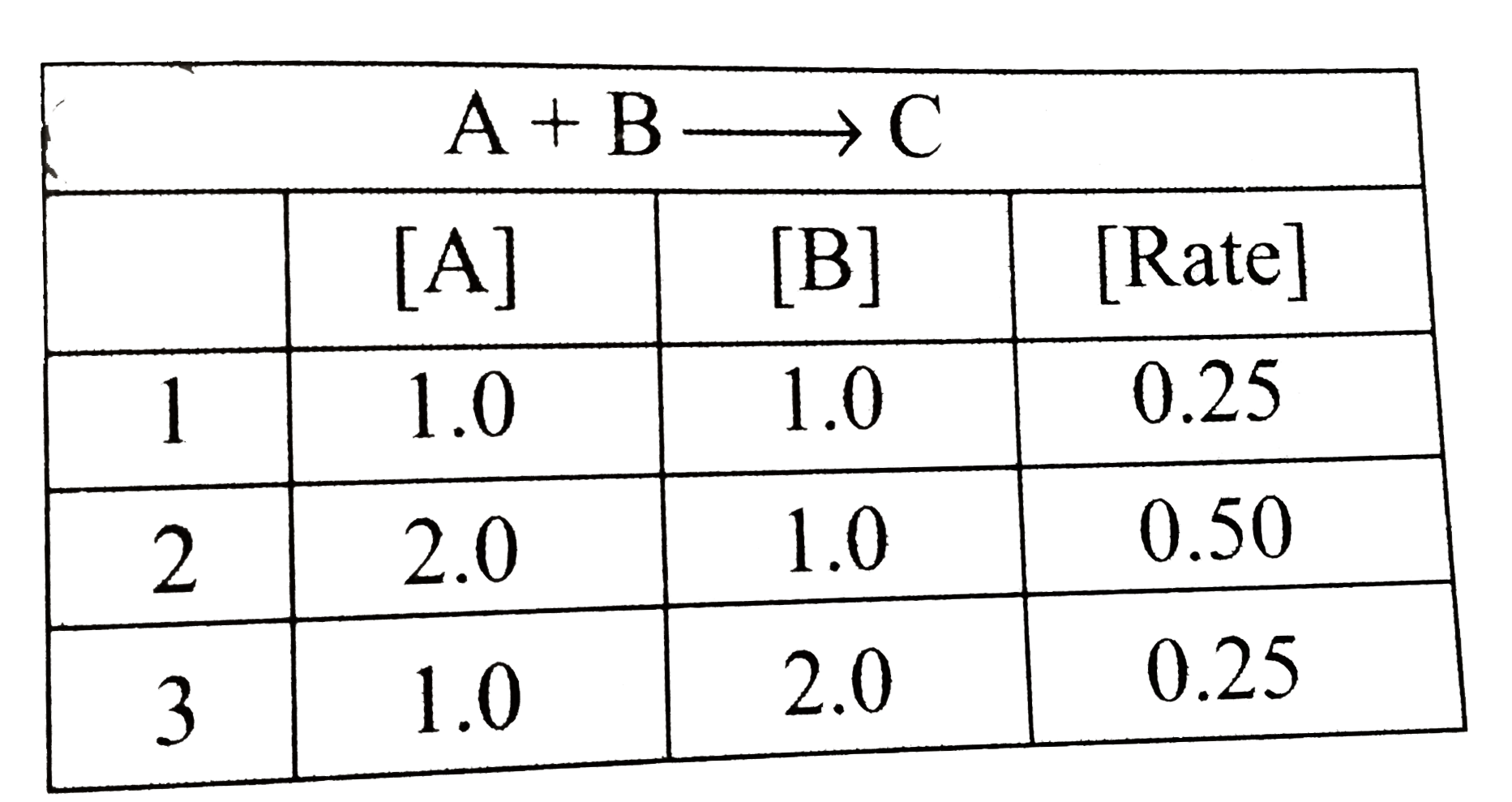In a catalytic conversion of N2 to NH3 by Haber's process, the rate of reaction was expressed as change in the concentration of ammonia per time is 40×10−3molL−1s−1. If there are no side reaction, the rate of the reaction as expressed in terms of hydrogen is (in mol L−1s−1)
60×10−3
20×10−3
1200
10.3×10−3
The correct Answer is:A
To solve the problem, we need to analyze the reaction and relate the rates of change of the reactants and products based on their stoichiometric coefficients.
1. Write the Balanced Chemical Equation:
The reaction for the Haber process is:
N2+3H2→2NH3
2. Identify the Rate of Reaction:
The rate of the reaction is given in terms of the change in concentration of ammonia (NH₃):
Rate=d(NH3)dt=40×10−3mol L−1s−1
3. Relate the Rates of Reactants and Products:
According to the stoichiometry of the reaction, we can express the rates of disappearance of the reactants and the appearance of the products as follows:
−d(N2)dt=11⋅Rate=d(NH3)dt=23⋅(−d(H2)dt)
4. Express the Rate of Hydrogen:
We need to find the rate of disappearance of hydrogen (H₂) in terms of the rate of formation of ammonia (NH₃). From the stoichiometric coefficients, we have:
−d(H2)dt=32⋅d(NH3)dt
5. Substitute the Known Rate:
Now, substituting the given rate of ammonia into the equation:
−d(H2)dt=32⋅40×10−3
6. Calculate the Rate of Hydrogen:
Performing the multiplication:
−d(H2)dt=60×10−3mol L−1s−1
7. Final Answer:
Thus, the rate of the reaction expressed in terms of hydrogen is:
d(H2)dt=−60×10−3mol L−1s−1
Summary:
The rate of the reaction in terms of hydrogen is 60×10−3mol L−1s−1.
---
The reaction for the Haber process is:
N2+3H2→2NH3
The rate of the reaction is given in terms of the change in concentration of ammonia (NH₃):
Rate=d(NH3)dt=40×10−3mol L−1s−1
According to the stoichiometry of the reaction, we can express the rates of disappearance of the reactants and the appearance of the products as follows:
−d(N2)dt=11⋅Rate=d(NH3)dt=23⋅(−d(H2)dt)
We need to find the rate of disappearance of hydrogen (H₂) in terms of the rate of formation of ammonia (NH₃). From the stoichiometric coefficients, we have:
−d(H2)dt=32⋅d(NH3)dt
Now, substituting the given rate of ammonia into the equation:
−d(H2)dt=32⋅40×10−3
Performing the multiplication:
−d(H2)dt=60×10−3mol L−1s−1
Thus, the rate of the reaction expressed in terms of hydrogen is:
d(H2)dt=−60×10−3mol L−1s−1
The rate of the reaction in terms of hydrogen is 60×10−3mol L−1s−1.
Similar Questions
Knowledge Check
- Question 1 - Select One
The rate of first order reaction is 1.5×10−2 molL−1−1min at 0.5 M concentration of the reactant. The half-life of the reaction is
A7.53 minB0.383minC23.1 minD8.73 min - Question 2 - Select One
The rate of first order reaction is 1.5×10−2 molL−1−1min at 0.5 M concentration of the reactant. The half-life of the reaction is
A7.53 minB0.383minC23.1 minD8.73 min - Question 3 - Select One
The rate of first order reaction is 1.5×10−2 molL−1−1min at 0.5 M concentration of the reactant. The half-life of the reaction is
A7.53 minB0.383minC23.1 minD8.73 min
For a first-order reaction A→B the reaction rate at reactant concentration of 0.01M is found to be 2.0×10−5molL−1s−1. The half-life period of the reaction is
View SolutionFor a reaction , 2A+D→3C, the rate of appearance of C at time t is 1.2×10−4mol L−1s−1 . Find the rate of reaction.
View SolutionFor a first order reaction A→B the reaction rate at reactant concentration of 0.01 M is found to be2.0×10−5molL−1s−1. The half-life period of the reaction is
View SolutionFor a first order reaction A→B the reaction rate at reactant concentration of 0.01 M is found to be2.0×10molL−1s−1. The half-life period of the reaction is
View SolutionFor a first order reaction A→B the reaction rate at reactant concentration of 0.01 M is found to be2.0×10molL−1s−1. The half-life period of the reaction is
View Solution


